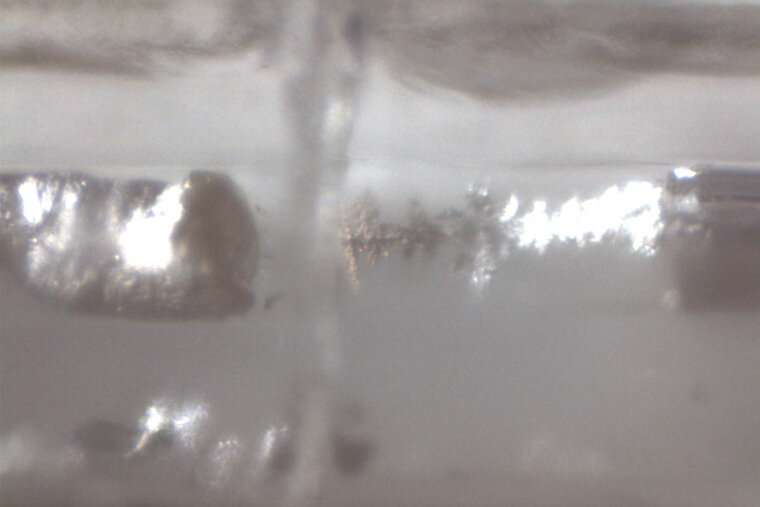Separator key when it comes to 'stable' vs. 'safe' battery

Research from the lab of Peng Bai, assistant professor of energy, environmental and chemical engineering at the McKelvey School of Engineering at Washington University in St. Louis, recently revealed the formula for building a perfectly stable sodium electrode.
The team has now discovered the formula for a perfectly stable and safe electrode.
The research was published last month in the journal Advanced Energy Materials.
Stability in an electrode is key to a well-performing battery. Instability is caused by irregular distribution of metal ions as they move from the cathode to the anode. The more uniformly the ions move, the smoother the outgrowth of metal deposits. This results in a longer-lasting battery and, importantly, a battery that is less likely to short and create a hazardous situation.
"Does absolute stability guarantee absolute safety?" Bai asked. It does not, especially during the fast charging. Bai and Bingyuan Ma, a postgraduate research associate, determined why.
The short answer: A critical component that has been left out in laboratory experiments is more important than previously thought. A perfectly safe battery that can undergo fast recharging requires cooperation from the separator.
When researchers observe the changes of metal anodes in real-time during battery fast charging, they do it in a lab setup that leaves out the separator, which is a crucial part of the battery. This porous divider separates the anode side from the cathode side of a battery. It turns out that the separator plays an outsized role in how safe a battery is, no matter the stability of its electrode.
"We found that safety depends on the pore size of the separator," Bai said. Battery separators are porous in order to hold liquid electrolytes for metal ions to move, but some have bigger pores than others. "The lower the pore size, the lower the chance of localized pore selection by the growing metal deposits."
That means that as the electrode moves toward the separator, if the pore sizes are small, there are fewer places the metal ions can penetrate. Instead of evenly spreading out, much of the current ends up in some naturally selected spots, which can lead to a battery short circuiting.
Bai and Ma have devised a mathematical model, called the Young-Laplace overpotential, that captures the dynamics of the physics inside an actual battery, which is now guiding Bai's lab to develop more stable and safer anode-free metal batteries.
"We had already found a physical threshold for the ideal cases," Bai said. "But the practical threshold is much lower. And it depends on the microstructure of the separator precisely following the mathematical model we developed."
More information: Bingyuan Ma et al, Fast Charging Limits of Ideally Stable Metal Anodes in Liquid Electrolytes, Advanced Energy Materials (2022). DOI: 10.1002/aenm.202102967















